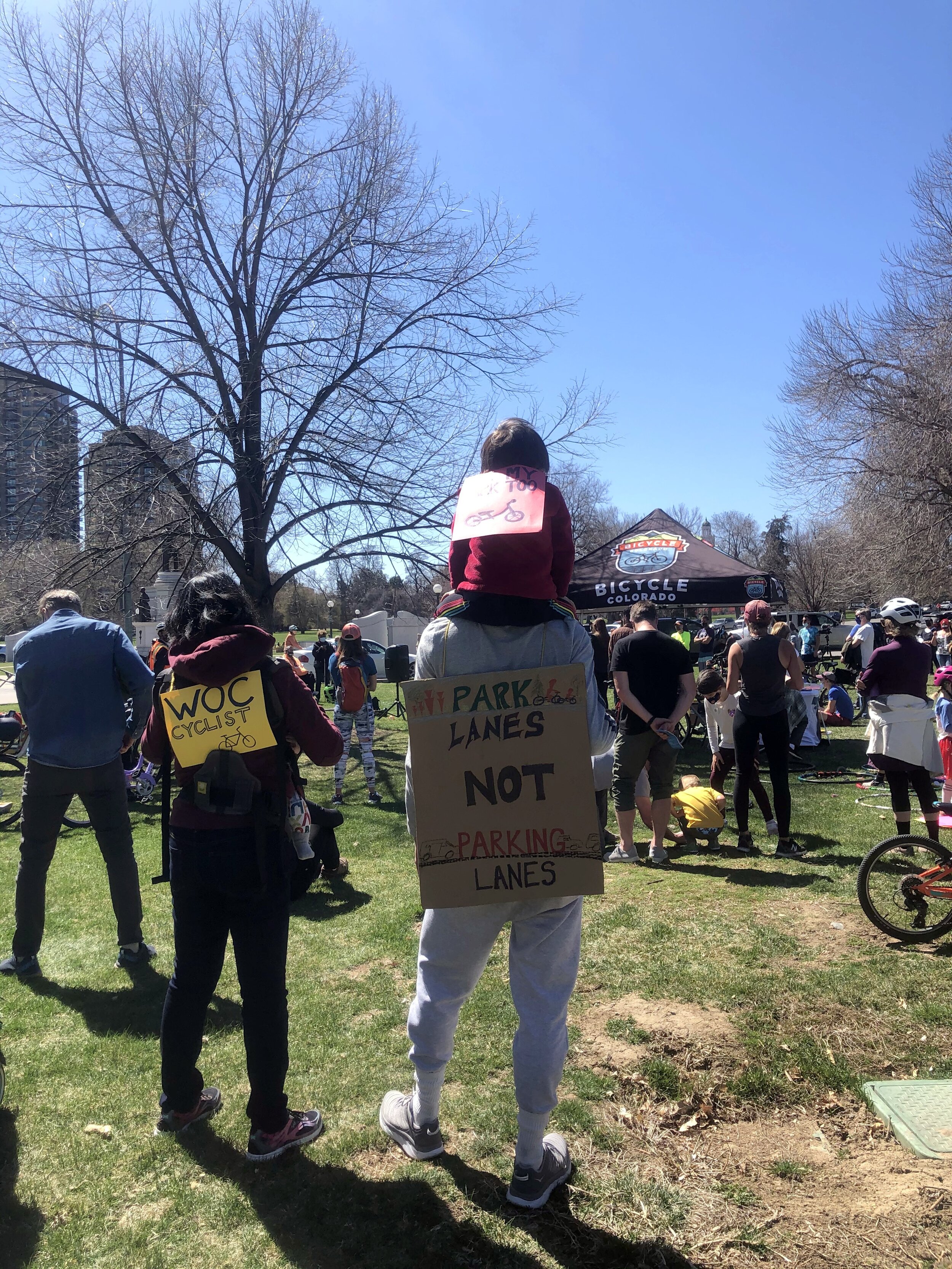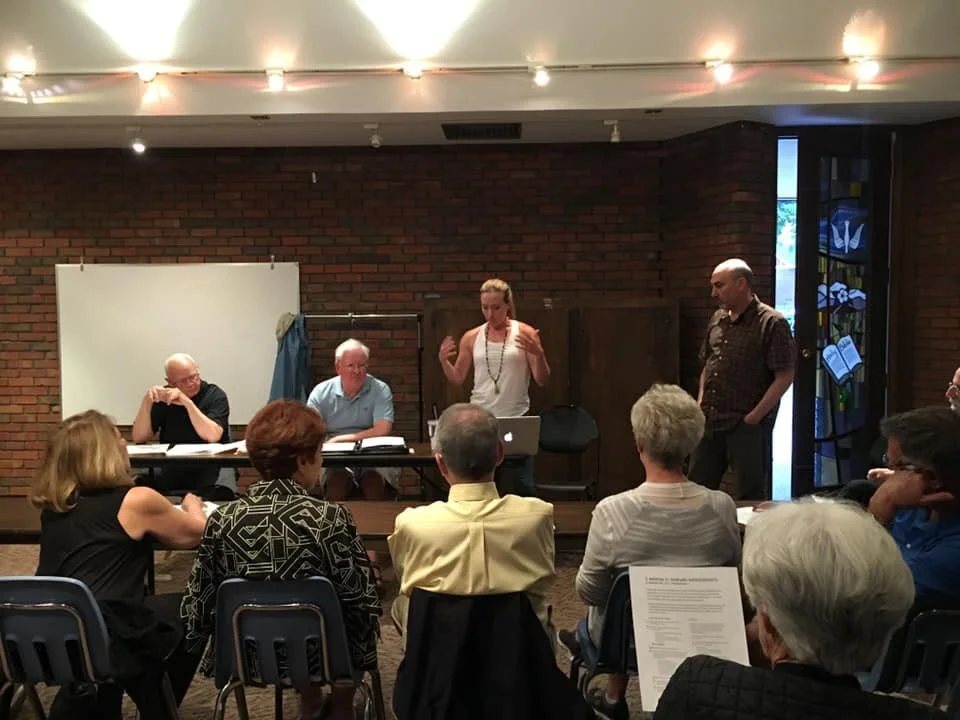Kansas authorities investigated the collision and ultimately charged Kidwell with 4 charges, including reckless 2nd degree murder, and improper passing of a cyclist. Kidwell hired private defense counsel Linus Thuston. Curiously, Thuston works as the city attorney in the neighboring county.
Last January, we had the opportunity to attend the preliminary hearing in this case. This hearing’s purpose was for the Judge to determine whether the County Attorney Mike Gayoso had probable cause to pursue all 4 charges at trial. In order for her to make this decision, the Judge heard evidence from both sides. This included testimony from Sherri Hahn, Donavon Hottman (one of the cyclists first on scene post-collision, who tried to assist Glenda and also observed Kidwell’s conduct), the coroner, Kidwell’s passenger, and responding law enforcement.
It was determined that drugs, alcohol, and phone use were not an issue, and that Kidwell had made a poor choice when he attempted to pass Glenda – both in failing to be sure it was clear of oncoming traffic, and in failing to provide the Kansas Mandatory 3-feet passing distance. It was a sunny day, and Kidwell admitted seeing Glenda from ½ mile and then ¼ mile away. The forensic evidence showed that Kidwell hit Glenda with excessive speed and force, such that law enforcement opined that Glenda was carried on the grill of the truck for some distance before her body was launched into the ditch.
Judge found probable cause existed and allowed all filed charges to proceed. Trial was set for December, 2016.
A few weeks before the December trial was set to start, plea discussions resumed. Kidwell agreed to plead guilty to the involuntary manslaughter felony (along with improper passing of a bicyclist). The possible sentence range on this plea ranged from 34 months of probation, to prison, and everything, including jail, in between.
Allow me to explain why people enter into plea agreements:
-Concerns about a jury decision and jury bias. Juries = rolling the dice. One just never knows. The feeling here, was that a jury in this particular venue (and no change of venue options were possible) might relate more to Kidwell, and would not understand (or try to understand) why Glenda (or anyone) would ride a bike on that road, and given typical anti-cycling bias in the area, would be likely to find Kidwell not-guilty.
-Concerns that even if the jury came back with a verdict finding Kidwell guilty, they may accidentally convict him on a lesser-included charge which could likely be a misdemeanor (juries are not told which charges are felonies and which are not).
-Concerns that the trial itself would re-victimize Glenda’s family and friends. The defense position would logically have been that Glenda was at fault, in order to reduce blame on Kidwell. The trial would likely have consisted of testimony disparaging Glenda, her riding behavior, and so on.
-Concerns (as in every case) of a potential mistrial, or appeal…. thereby dragging the process out even longer, and delaying the time for closure for Joe and Glenda’s family.
Settlement means you get less than you want, but you trade certainty for uncertainty, and you take less in exchange for closure. This is the case in any case, whether it’s civil or criminal. A plea deal is a settlement agreement. Neither side is happy – but both sides have avoided the “what-ifs” associated with a wild jury who might do something crazy. And both sides get certainty. And both sides get closure. This is why so many cases filed in our Courts end in settlement and such a rare few make it to trial.
**I want to point out that the plea agreement here was reached with direct involvement of Joe and Glenda’s family. County Attorney Gayoso went above and beyond to involve my office and Joe, in all case decisions, and I cannot tell you how much that matters – and means – to crime victims. (If you'd like to shoot him a note of thanks or gratitude, his info is here.) To be kept in the dark, as many prosecutors and DAs we deal with, do, re-victimizes cyclists who are hit and injured, or whose family member was hit and killed. (Side note: we realize fully that DAs/prosecutors have incredibly large caseloads and are overwhelmed so the time and attention they can spend on each case is incredibly limited…. However that does not eliminate their duty to serve crime victims by keeping them informed about the case).
Gayoso informed Joe that only family members would be allowed to speak on behalf of Glenda, and Joe undertook this task with fervor and clearly, intent to see that Kidwell was imprisoned to keep the community safe from his driving behavior. The statement he would eventually make to the court began many weeks in advance and underwent multiple revisions. It was thoughful and purposeful. Imagine for a moment -the gravity of this task. And then do me a favor, and send Joe a virtual hug from afar.
The sentencing hearing was ultimately held on January 9, 2017, in Girard, Kansas, at the Crawford County Courthouse. Glenda’s family, friends, cycling teammates, coworkers from Washburn University, former students (including one from California), and other cyclists and supporters, packed Gayoso’s side of the courtroom. Kidwell’s side was similarly packed. Needless to say, in a small rural community, this type of turnout is extremely rare. It spoke volumes to the Court about the importance of this matter.
Kidwell’s attorney called 9 witnesses to speak on his behalf- they ranged from local law enforcement, associates, a young man who called Kidwell his father figure, Kidwell’s younger brother, and finally Kidwell’s wife. All of who indicated to the Court that the community would be at a disservice if Kidwell were imprisoned. With no criminal record, Kidwell’s “risk assessment score” had also come back at 10 -a very low score. (Keep in mind here-the issue was not whether he was a criminal likely to reoffend, but whether his driving was likely to pose a threat to others).
Since hitting and killing Glenda, Kidwell had received two subsequent speeding violations in Wichita and Neosho County. One was for going 84 in a 55mph zone –the other, for going 55 in a 40 zone. (Again –curiously, Thuston as county attorney, had handled one of these tickets and reduced it down to a non-moving violation). One of Joe's main goals would be to inform the court of these violations during his statement. To that end, we obtained certified copies of both violations –to hand to the Court for her consideration. One of the factors we felt she needed to consider MOST strongly, was whether Kidwell was likely to become a safe driver, or whether he was likely to continue to be a hazard and threat to other Kansas road users.
Strangely, the Court would not hear this evidence from Joe – and the Judge actually admonished Gayoso for what she believed was his attempt to get in State's evidence at the hearing through Joe, despite his agreement to stand mute. This was not the case at all, and in fact our office was the one that obtained these documents and instructed Joe to make mention of them in his statement. (Odd that the court would not allow these tickets to be submitted for her consideration, since at Kidwell’s probation hearing months before, these tickets were entered into the record). And of course, Kidwell’s driving behavior went to the heart of the issue here.
At the conclusion of the hearing, the Judge rendered a shockingly light sentence. She decided that serving the sentence term on probation, as opposed to prison, was sufficient, though she did remand Kidwell to 60 days in jail. She also ordered him to write a letter of apology and to serve community service. Minor fines were assessed. She indicated that, should Mr. Kidwell violate the terms of this probation, he would likely be remanded to prison – and if this occurs, the 60 days served in jail would be given as a credit against that time.
Kidwell’s family was clearly emotional about the decision to remand him to jail, however it was Glenda’s side of the courtroom that was most in-shock. 60 days of jail time for hitting and killing a cyclist as a result of driving recklessly? Needless to say Glenda’s family, friends, and the entire cycling community felt short-changed. But what I want to emphasize is, this light sentence was not a reflection of the work County Attorney Gayoso did in this case. It was purely a reflection of the judge’s decision to go easy on Kidwell based on the range of punishment she could impose on the plea deal. And unfortunately in her findings, she indicated that she interpreted Gayoso standing mute as a persuasive factor – and we believe she incorrectly interpreted it as though the state did not feel strongly about Kidwell’s sentence.
Articles detailing the case from start to finish can be found on CJonline.com – many thanks to reporter Steve Frye (and later, Lucas Ranker) for their rigorous coverage of the case.
1/9/17: Man Convicted ...
11/21/16: Chanute Man pleads guilty...
6/7/15: Glenda Taylor killed...
And you'll find many more by visiting CJonline.com
My personal involvement in this case –unbeknownst to me – began with my own racing experience alongside Glenda when I lived in the Midwest as a new and aspirational cyclist (see, e.g., this article with Glenda at top and my photo at bottom left!). My father, Donavon, was also one of the first cyclists who came upon Glenda right after the collision. You can imagine the impact and effect that experience had on him, and on his good friend/fellow cyclist Frank, also a witness to the aftermath. And finally, perhaps the most uncanny connection of them all for me – just a few days before Glenda’s death, she asked her husband Joe to ask a female cyclist we’d both raced with, Catherine W., about me (we believe it was prompted by seeing my name in the Outside Magazine article last summer) –something along the lines of if the other female knew me, had we raced together, etc. Joe was supposed to ask Catherine at their next group ride together. Joe forgot once and Glenda reminded him a second time to ask Catherine about me. Two days later, she was killed. These connections led to Joe’s eventual hiring of our law firm to represent him in the civil matter against Kidwell’s insurer, as well as Joe’s insurer, and also the insurer for USA Cycling’s race event that day. The article detailing my role can be found here.
This case reinforces the need for states to adopt Vulnerable Road User laws!





















